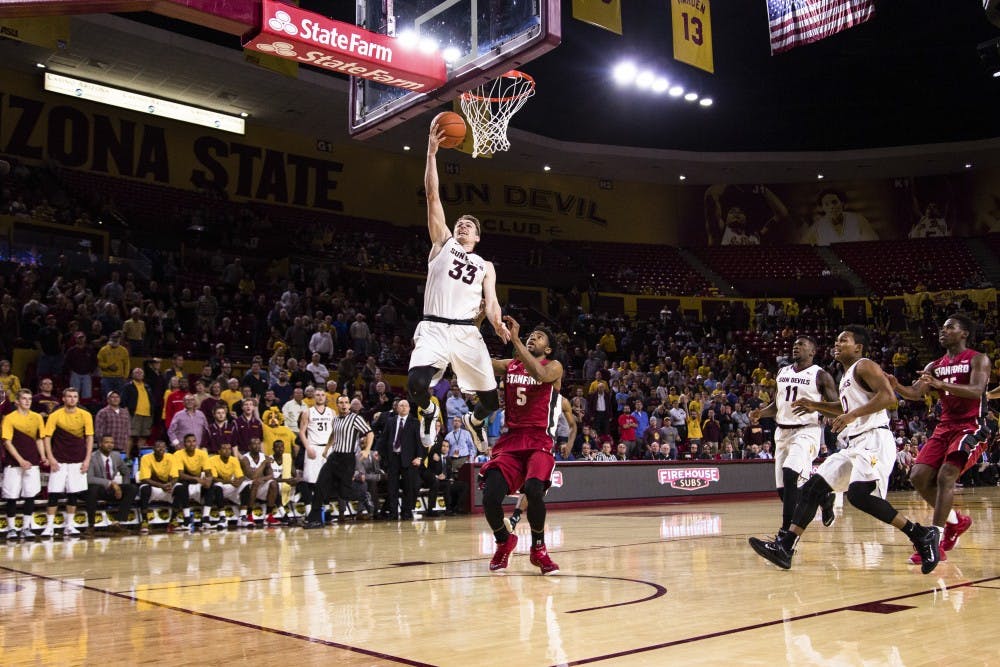Every once in a while, I like to spend my Wednesday evenings at Phoenix Art Museum. Why Wednesdays you ask? Well frankly, because the museum offers free admission on Wednesdays from 3 p.m. until closing at 9 p.m. However! As I was meandering, I wandered into an exhibit that I would have paid to see (and believe me, that’s saying a lot).
 An outfit designed around the concept of the jukebox in “Digital Print Fashion.” Photo by Alexandria Conrad
An outfit designed around the concept of the jukebox in “Digital Print Fashion.” Photo by Alexandria ConradThe museum currently has a few temporary exhibitions, two of which especially piqued my interest. The first is “Digital Print Fashion” and is a compilation of clothing designs, mostly dresses, made from textiles on which a variety of patterns have been digitally printed. The exhibit’s description explained that technological advances have broadened designer’s abilities for textile printing as is showcased in Digital Print Fashion. Some of my favorite designs included a dress printed with a hedge maze, and another with a jukebox.
The second exhibit is “Order, Chaos, and the Space Between,” compiled of contemporary Latin American art from the Diane and Bruce Halle Collection. The exhibit feature over 50 artworks by 43 different Latin American artists from 7 different countries: Argentina, Brazil, Columbia, Cuba, Mexico, Peru and Venezuela. It is the first time in the history of the Phoenix Art Museum that so many countries have been represented in one exhibition.
 3. Order, Chaos, and the Space Between is definitely an exhibit worthy of your time. Photo by Alexandria Conrad
3. Order, Chaos, and the Space Between is definitely an exhibit worthy of your time. Photo by Alexandria ConradThe artwork in “Order” uses a range of media types. Paint, thread, wire. One piece even contained candy (open for the taking by observers).
One of the things I really like about this exhibit is that it is accompanied by a series of lectures by some of the artists involved and I was lucky enough to attend one of these lectures last night.
The guest speaker on Wednesday night was Luis Cruz Azaceta. I was really grateful for the opportunity to attend this lecture because I always love hearing what artists have to say about their own work. Art is such a subjective matter, so hearing what the creator has to say about it can offer a whole new perspective.
 Carlos Amorales’ work, “Black Cloud” took a month to set up as each paper butterfly and moth was placed individually onto the walls and ceilings.
Carlos Amorales’ work, “Black Cloud” took a month to set up as each paper butterfly and moth was placed individually onto the walls and ceilings.I was curious to see what Azaceta had to say because I found his painting in the exhibit to be rather disappointing. This opinion was only amplified after seeing slides of his other paintings during his lecture.
Luis Cruz Azaceta left Cuba in 1960 then started and spent much of his career in New York as a part of the Neo-expressionist movement during the 1970’s and 80’s.
Azaceta’s piece in “Order” is titled “Rafter: Hell Act II,” and is described by the museum as:
"Rafter: Hell Act II exemplifies his approach to combining abstraction and figuration within a single work … This tiny figure navigates a waterway represented by a slender blue line that meanders between black spheres as if through a labyrinthine mine field. This diminutive figure fleeing the threatening weapons on the right is also 'imprisoned' by a yellow grid painted directly over him. His eyes are closed: is this a nightmare?"
While the painting is by no means poor, but in comparison to his other work I would consider it subpar.
 Azaceta’s self portrait based on Taxi Driver caused the police to show up at his doorstep. Photo by Alexandria Conrad
Azaceta’s self portrait based on Taxi Driver caused the police to show up at his doorstep. Photo by Alexandria ConradOne of his paintings that I really enjoyed is a self-portrait that he described as, “are you talkin’ to me?” He said this particular self portrait (pictured here) was based on Taxi Driver, then went on to tell a very funny anecdote about how painting it in front of his window led his neighbor to call the police since he was sitting there with a gun to his head.
The lecture series will continue with two more artists speaking on April 3rd and 24th. I would highly suggest visiting the exhibits since I cannot (unfortunately) post pictures of some of the works. The rest of the lectures take place on Wednesdays too, so it’s free to visit.
I hope you enjoy them as much as I did!
If you’d like to reach me with comments, concerns or suggestions you can email me at anconrad13@gmail.com or tweet me at @alliectersely




